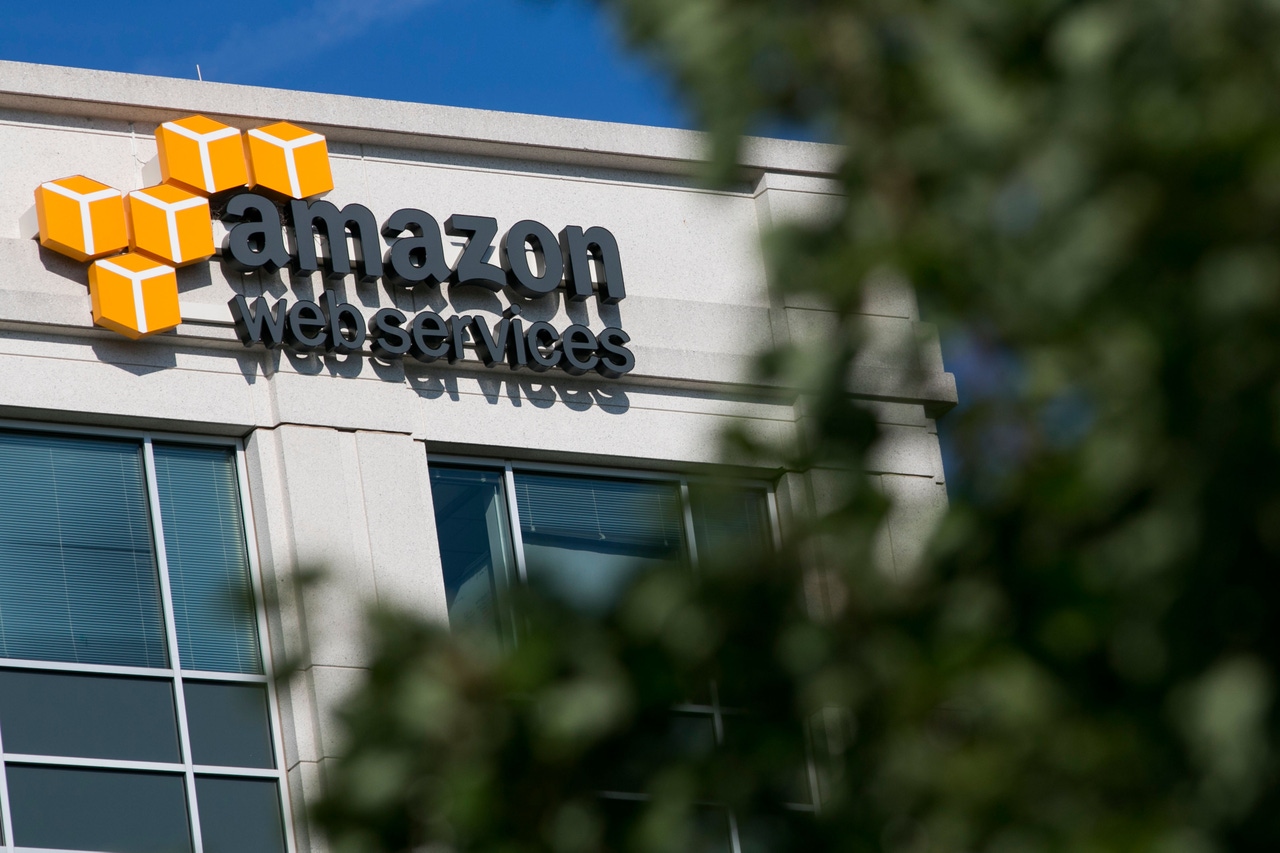AWS Is on a Mission to Port Open RAN To Arm and End x86 MonopolyAWS Is on a Mission to Port Open RAN To Arm and End x86 Monopoly
With its Graviton processors, AWS is working with Nokia and other software companies to provide an architectural choice for telcos.

This article was originally published on Light Reading.
Ishwar Parulkar, the chief telecom technologist for Amazon Web Services (AWS), does not see an abundance of industry love for x86, the Intel-conceived chip architecture telcos have been using to virtualize and open their networks. "They haven't chosen x86 because that is what they wanted," he said. "They didn't have a choice."
Pick any server in any data center today and there is an outsized chance it is powered by one of Intel's general-purpose processors (GPPs). The only big competitor is AMD, and it also uses x86, an architecture whose origins can be traced back to the 1970s computing era. Last year, the two chipmakers accounted for more than 90% of the central processing units (CPUs) in servers shipped to data centers, according to Counterpoint Research. Telcos weighing the benefits of using standard computing technologies in their networks have effectively had to choose between x86 and sticking with purpose-built kit.
But AWS is one of several outsiders now bashing away at Intel's throne, and it comes with the biggest hammer. AWS became a chipmaker in early 2015 when it bought a semiconductor business called Annapurna Labs, reportedly for about $370 million. The Israeli start-up had been a licensee of Arm, a British company whose chip designs feature in most smartphones. Building on what Annapurna began, AWS soon produced its own Arm-based chip. Branded Graviton, it is aimed not at smartphones but at replacing x86 CPUs in its vast data centers. Last year, it notched up a small but significant 3% share of the market, according to Counterpoint's data.
That gives telcos a potential alternative to x86 as they introduce data center technologies into their operations, including the radio access network (RAN). What makes Arm superior, in Parulkar's view, is the energy efficiency and related cost attractions of its technology. Intel's x86 is a CISC architecture, where the acronym stands for complex instruction set computing. Arm uses a later concept known as RISC, for reduced instruction set computing. The technical differences are beyond the scope of this story, but RISC is valued for being less resource hungry, while CISC is said to be more powerful. If they were boxers, RISC would be the quick-footed Sugar Ray Leonard and CISC the big-punching George Foreman.
Yet Parulkar is among a contingent of executives who seem to regard Arm as an improvement in most cases on x86, with few downsides. Arm's cores, the building blocks of a processor, are smaller than x86's, but clients can compensate by including more of them, Parulkar told Light Reading. "There are some workloads where x86 makes sense and is the right architecture," he said. "But there is definitely a large segment where Arm can do just as well or even better and gives you the cost and energy benefits."
These are substantial, according to AWS. Japan's NTT Docomo previously worked with NEC, a Japanese vendor, to run part of its 5G core network on Graviton processors in the cloud. The result was a 70% reduction in energy use compared with x86, said Parulkar. For most workloads, the price-performance ratio is 40% lower, he claims. The case for using Arm-based processors in the RAN, which accounts for up to 70% of the energy consumed by a telco network, is largely about whittling down those operating costs.
RISC and Reward
But Arm and AWS face some Annapurna-sized obstacles in this market. The most mountainous is the lack of a very developed ecosystem for Arm-based processors, whose share of data-center CPUs is still just a few percentage points, including Graviton. If they are not working on old-fashioned appliances, big RAN software developers like Ericsson have prioritized x86. CISC and RISC, meanwhile, remain incompatible, said Sachin Katti, the head of Intel's network and edge group, when he met Light Reading at Mobile World Congress (MWC) earlier this year.
One of the biggest jobs for AWS is tackling that incompatibility. "Porting existing software which was meant or designed to run on x86 to Arm is something that we need to work on, and something that we are working on very actively," said Parulkar. As part of that effort, it is supporting Arm on the development of libraries that would make porting easier. "Arm in general has a team that looks at libraries to help with porting from different stacks," he said. "It's been doing this for a while, but we've been engaging with them to see how we can enable the RAN stack particularly to be moved to this architecture very quickly."
AWS has no FlexRAN, the reference design used by coders writing for Intel's x86 chips, but it does claim to offer a similar level of support to independent software developers (ISVs). "That is part of our process," said Parulkar. "We've just not labelled it anything specific, but we are doing that right now as we work with ISVs to port the stack. We continue to fine tune and optimize the stack and the underlying infrastructure on top of Graviton to make it all work."
In the meantime, one big ISV has already thrown its considerable weight behind Arm. Working with Marvell, another Arm licensee, Finland's Nokia has been touting an accelerator card that could be slotted into an x86 server to offload the baseband or Layer 1 functions, which make up the most computationally demanding part of the RAN stack. This same card could also be used in conjunction with Graviton chips, something AWS and Nokia demonstrated at MWC.
Dishing up Business
The flagship RAN customer for AWS is Dish Network, a company now investing billions in the rollout of a nationwide US network. Currently, however, Dish runs its software on x86 chips hosted either in AWS facilities or on a VMware platform at mobile sites. That software, moreover, comes from Mavenir and Samsung, rather than Nokia.
"When there is hardware involved, there are qualifications," said Parulkar. "That process is ongoing until it can be deployed in a commercial network," Today, AWS also still appears to lack Graviton-equipped kit that could be deployed at sites as a distributed unit, the box where Layer 1 processing takes place. "For the RAN, you need a small form-factor SKU [stock-keeping unit], which is what we are working on."
Unlike Intel, however, AWS is not in the business of selling chips, and it is hard to imagine it ever will be. Until now, its Graviton processors have been installed in its own data centers, hosting non-RAN workloads for numerous customers. An SKU for a telco site would move them outside this environment but probably not off Amazon EKS, its Kubernetes platform for managing cloud-native software (containers).
Does Parulkar envisage Graviton being used in tandem with Red Hat, VMware or Wind River, the main providers of Kubernetes tools for private clouds? "That is always possible," he said. "Right now, we've not seen interest in that and are not pursuing that actively. But there is nothing in our philosophy or approach or objectives that would preclude us from doing something like that." Both Red Hat and VMware can and do run their platforms on AWS, he points out.
"We don't want to build a whole slew of products," said Parulkar. "We really want to focus on understanding RAN workloads and pick customers who are serious about this transition and build the right offering to start with. Over time, we are definitely open to expanding it in different dimensions."
More Arm Wrestling
Arm-based competition to Graviton is slowly emerging for telcos keen on virtual and open RAN. Ampere Computing, an Oracle-funded start-up founded in 2017 by former Intel president Renee James, is working with server maker HPE on a RAN product, although it appears to be a long way from commercialization. Quizzed recently on the various challenges, Geetha Ram, HPE's head of telco compute, alluded to the difficulty of persuading software companies to support Arm. "The question you always get from Ericsson and Nokia is: 'What's in it for me? Why do I have to maintain two code bases?.'"
Just this week, Nvidia, the stock market darling whose market cap recently hit $1 trillion, has been advertising Grace Hopper, an Arm-based CPU combined with a graphics processing unit (GPU) suitable, among other things, for the RAN (or so executives claim). Instead of using an accelerator card for Layer 1, as Nokia is doing, this would rely on the GPU. That could excite operators such as Japan's Rakuten Mobile, whose boss Tareq Amin believes accelerator cards add cost and complexity. Before Nvidia's announcement, only Intel was offering a fully integrated accelerator, and that obviously comes with x86.
AWS plans to make use of Hopper, the GPU part of Nvidia's latest offer, but Parulkar is not persuaded of its suitability as a Layer 1 accelerator. "They are pretty power-hungry chips," he said. "Arm is still in my mind the best fit if you want to meet price performance and energy efficiency." Nokia's accelerator card, he notes, is based on customized silicon that uses Arm blueprints.
A clear theme of the moment is the recent advance of Arm into a data-center realm it had previously struggled to enter. But for all the activity by various Arm licensees, Intel remains the big force in that market, and an even bigger one in the nascent open RAN sector. Without real commercial progress by AWS and others, it could be x86 or nothing.
About the Author
You May Also Like









